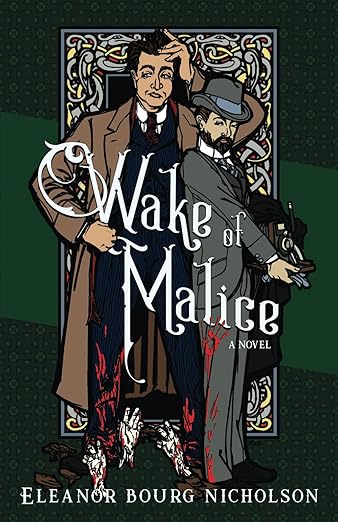Genre
Audience
Author’s Worldview
Year Published
Themes
Reviewed by
A.R.K. Watson
Hugh Buckley is an Irishman trying to leave a bad childhood behind by making it as a journalist in bustling cosmopolitan Edwardian London. When his editor hears of a murder and theft, with the main culprit being an Irish priest, he smells a story sure to please his English audience and sends Hugh and photographer, Freddie Jones, to investigate. What follows is a gothic paranormal fantasy that brings to life the spiritual battles of Irish culture and history.
As Hugh begins to see his country with the eyes of an adult instead of those of an abused child, Freddie also begins to find that this so-called backwards and superstitious country might have more sense in it than he would like to admit. Then a certain English exorcist, Fr. Thomas Edmund Gilroy, comes into town, and their investigation begins to take a far weirder turn than either of them is ready for. Along the way, Hugh finds himself gradually smitten by a local girl, but he seems to put his foot in his mouth every time she is around.
Nicholson has already cemented her gothic novels as a reliable source for those readers who wish to explore the original Christian fairy tales before the influence of Protestant and secular forces. This newest installment does not disappoint. What distinguishes it from the previous two is its departure from English culture to Irish. Leprechauns do not seem at all frightening to the modern mind, but it turns out that the original Irish tales of them have far more in common with current myths about undead zombies. A few other original Irish myths besides these show up. Unlike A Bloody Habit which focused on vampire myths and Brother Wolf which focused on werewolf myths , Wake of Malice explores the way that post-Christian pagans portray their mythology now versus how monstrous they originally were.
I particularly enjoyed the women in this story. The O’Hara sisters, with whom Hugh becomes enamored, are particularly fun. The elder, Doirrean, is the stereotypical fiery red-headed Irish beauty with more gumption than sense, but her quieter, plainer sister, Edith, ends up revealing at least as much courage and far more wisdom despite not fitting the brash-heroine aesthetic so popular these days. This story shows a real understanding and display of feminine leadership in the Church that complements the masculine. The priests frequently discuss those women in the parish who hold special sway over the culture of the parish. I particularly appreciated a recurring background character who is a mother of a set of sons whose Mass-time rowdiness is a regular presence in the parish. Hugh, who grew up with an abusive mother, notes the difference between that woman’s children versus the quieter, more mannerly children with some concern. He knows that sometimes kids are controlled by abusive threats rather than by loving discipline.
We see a bit more of Fr. Thomas Edmund Gilroy’s world in this book than we have in previous installments. Fr. O’Connor, the priest superior of the pastor of the beleaguered Irish town in the book is Jesuit, so as a Dominican, Fr. Gilroy lacks the necessary authority to tackle the town’s paranormal issues head on. Complicating matters is that Fr. O’Connor regards the old monsters as pure superstitious make-believe, and is more than a little distrustful of the whole branch of exorcism in general. He pits his will against Fr. Gilroy, preventing him from actually dispatching the forces of evil until things escalate out of control. This interesting conflict between the different priests reveals much about the complexities of Catholic life and culture that confuse even cradle Catholics.
As usual the atmosphere and worldbuilding and characters carry this story through. The identity of the murderer became painfully obvious about half way through the story, which could be a tad frustrating if you are looking for a clue-finding who-dunnit story. However, the strength of the romantic subplot, the creepy atmosphere and the exploration of original Irish mythology kept the story enjoyable.
At the end of the book there is a big action scene that is full of both fun and creepy moments, although a bit chaotic. However, Nicholson’s venture into a more action-oriented story is very welcome and I hope to see more of this in subsequent books.
This novel will please fans of Edwardian paranormal fantasy and anyone who likes British wit. This book will go over best with Catholics, as it pulls no punches about the sacramental reality underpinning the world. However, the few Protestant characters who show up are basically good people and are not likely to offend Protestant readers. Probably the only group who would take serious offense are modern pagans. As a series that tackles the mischaracterization that pagan influences exert on storytelling, this is most likely to be a bit too confrontational as an opening discussion topic with such readers, but for everyone else it’s quite refreshing.



